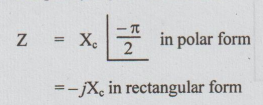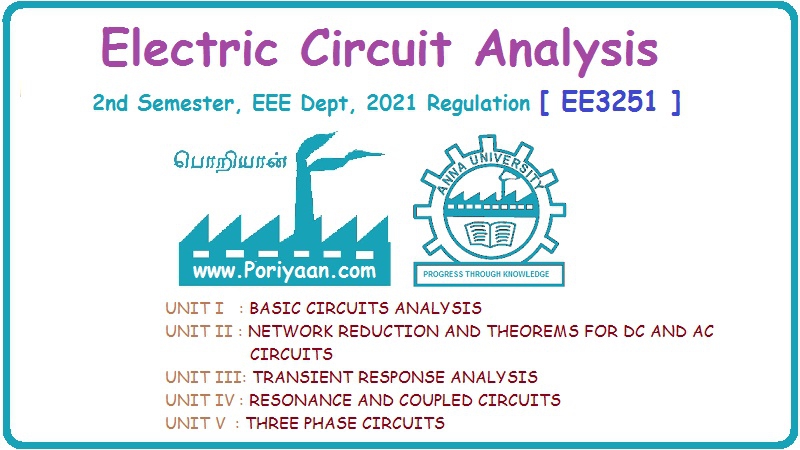Electric Circuit Analysis: Unit I: b. Basic circuits analysis
Points to Remember
Basic circuits analysis | Electric Circuit Analysis
Electric Circuit Analysis: Unit I: Basic circuits analysis : Points to Remember
POINTS TO REMEMBER
1.
Given the equation of v, the expression for i is found by the following way
(a) for purely resistive circuit :
By
Ohm's law, I V/ R
(b)
for purely inductive circuit:
By
integrating v.
(c)
for purely capacitive circuit
By
differentiating v.
2.
For purely resistive circuit, if voltage and current are shown in the polar
form, the angles of both must be same nature. For example if V = |V| ∠0. Then I = |1|∠0. If V= |V| Zπ/2. Then
I = |I| ∠π/2 and so on.
3.
The ratio of V to I is called impedance Z.
(a)
For purely resistive circuit:
Z
= R ∠0 in polar form
=
R in rectangular form
(b) For purely inductive circuit :
Z
= XL ∠π/2
in polar form
=
jXL in rectangular form.
(c)
For purely capacitive circuit:

4.
For purely resistive circuit, both V and I are in phase
Phase
angle ϕ = 0
cos ϕ = 1
In
other words, if the power factor is unity, the circuit element is supposed to
be purely resistive (Except resonant circuits).
5.
For purely inductive circuit, current lags behind the voltage by π/2.
ϕ
= π/2 radians, lag
cos
ϕ = сos π/2 = 0, lag
In
other words, if the power factor of the circuit is zero lag, the circuit
element is purely inductive.
6.
For purely capacitive circuit, the current leads the voltage by. π/2
i.e.;
ϕ = π/2 radians, lead.
⇒ cos ϕ = 0, lead.
Thus
if the power factor of a circuit is zero lead, then the circuit element is
purely capacitive.
7.
The average power for pure
(a)
resistive circuit = | V | | I |
(b)
inductive circuit = 0
(c)
capacitive circuit = 0
8.
In polar form, for resistive circuit,
V
= |V| ∠ 0 and I = |I| ∠ 0
9.For
inductive circuit, if V is taken as reference,
V
= | V | ∠0, I = |I| ∠ -π/2
10.
For capacitive circuit with V as reference,
V
= |V| ∠ 0, then, I = |I| ∠ π/2
It
is to say that I leads V by π/2. It is as good as telling that V lags behind I
by angle. π/2
But
here also we have to prefer to say as how I is with reference to V.
If
I is taken as reference then I= |I| ∠0,
v = |v| ∠-π/2
11.
In a circuit, if current lags behind the voltage by π/2 radians, then the
circuit element must be purely inductive.
12.
If the current leads the voltage by π/2 radians, then the circuit element must
be purely capacitive.
13.
(a) R is independent of frequency.
(b)
XL varies linearly with frequency.
(c)
XC varies inversely proportional to frequency.
14.
The basic units of R, XL and XC are ohms.
Electric Circuit Analysis: Unit I: b. Basic circuits analysis : Tag: : Basic circuits analysis | Electric Circuit Analysis - Points to Remember
Related Topics
Related Subjects
Electric Circuit Analysis
EE3251 2nd Semester 2021 Regulation | 2nd Semester EEE Dept 2021 Regulation
